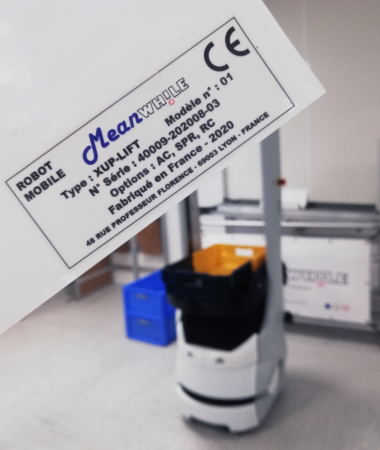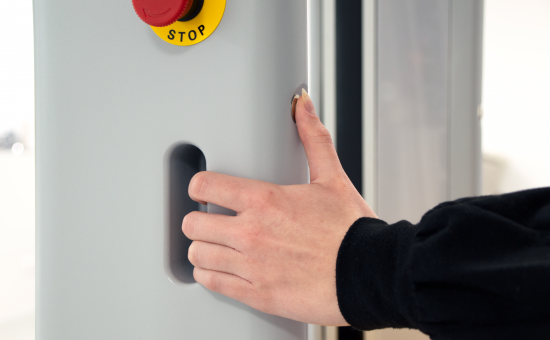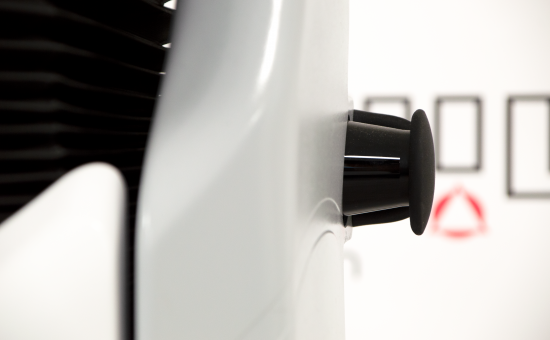
Investing in autonomous mobile robots:
The importance of safety standards
- Expertise
- Temps de lecture : 10 min
How to face safety challenges in autonomous mobile robotics applications?
Autonomous mobile robots move independently in complex environments, open to the general public or industrial. They bring together employees, workstations and forklifts… From now on, humans and mobile robots collaborate and share the same work and/or circulation space. This new situation requires reflection on the risks associated with this interaction and creates new challenges in terms of preventing occupational health and safety risks at work.
I. Regulations adapted to autonomous mobile robotics
It is essential, in order to create a compliant product, to take into account the various regulations in force right from the study and design phase.
The ISO 3691-4 standard:
The ISO 3691-4 standard concerns driverless industrial trucks. These are motorized and designed to operate automatically. Autonomous Mobile Robots are considered driverless industrial trucks.
The EMC Directive 2004/108/EC:
The EMC directive contributes to CE marking with regard to electromagnetic compatibility. It applies to any electrical or electronic product likely to be able to disturb the electromagnetic environment, or to be disturbed by it.
Machinery Directive 2006/42/EC:
The Machinery Directive 2006/42/EC uses the original definition of “machinery”: It is a set of parts or organs linked together, at least one of which is mobile and, where applicable, actuators, control and power circuits,… They are joined together for a defined application, in particular for the transformation, treatment, movement and packaging of a material. But she also adds:
1) machines (example: autonomous mobile robots)
2) interchangeable equipment
3) security components
4) lifting accessories
5) chains
6) cables and straps
7) removable mechanical transmission devices
8) partly completed machinery (example: the mobile platform, the Embedded Application Module, etc.)

In accordance with Directive 2006/42/EC, a declaration of incorporation of partly completed machinery must be provided when the “CE” marking has not been affixed.
II. Who is responsible for workplace safety? The robot manufacturer, the integrator or the customer?
It is necessary to identify the main economic actors as well as their legal responsibilities in the implementation of the rules for the design and use of autonomous mobile robots with regard to the role played by each of them.
- Legal responsibility of the manufacturer and the integrator
The legal liability of the manufacturer is based on article L.4311-3 of the civil code. The latter prohibits the marketing of an autonomous mobile robot that does not meet the design rules that apply to it. This obligation does not apply to any parts subsequently modified by the user.
The legal status of the integrator is the same as that of the manufacturer, if the latter is designated as project manager as a whole, and as responsible for placing a “set of machines” on the market in accordance with European Directive 2006/42/EC, it is his responsibility to declare the conformity of the robotic system.
On the contrary, the integrator who works on the plan, or under the direction of the employer or who only intervenes on part of the project does not have the legal status of manufacturer.
- Legal obligations of the employer
As for the employer’s legal liability, this is based on Article L. 4321-2 of the Labor Code, which prohibits the commissioning or use of an autonomous mobile robot that does not comply with the rules of design or use applicable to it when it is placed on the market. In other words, the employer who uses an autonomous mobile robotic solution as part of his professional activity without being responsible for either its manufacture or its integration in new condition is in charge of maintaining compliance. of the autonomous mobile robotic solution.

III. What procedure your AMR supplier must follow to set up a safe autonomous mobile robotic solution
1. Performing a risk analysis:
This is the first phase of the risk assessment process. It consists in identifying all the dangerous phenomena from the characteristics, performances and operating modes of the machine. It makes it possible to determine which risks require the implementation of protective measures and to quickly assess the security needs of the autonomous mobile robot, thus serving as a basis for its design. It is therefore very important to properly formulate the employer’s needs in the specifications, including from the point of view of safety at work.
2. Risk assessment
This assessment of professional risks makes it possible to identify and anticipate all the dangers in order to put in place appropriate means of protection. It also makes it possible to estimate the risks according to their severity and the probability of occurrence of the damage (Risks related to the environment, to mobile robots, etc.).
3. Realization of a robotic system:
This must comply with all the European directives that apply, in particular by integrating the mobile platform, the Embedded Application Module and other components to guarantee the security and the functionality of the system.
4. Completion of a CE declaration:
It is necessary for your supplier to draw up and provide you with a complete EC declaration of conformity.
5. Constitution of the technical file:
Develop the technical file which demonstrates compliance with the “Machinery” directive 2006/42/CE and which is composed between risk assessments, descriptions, plans, diagrams of the installation, tests, standards, and technical reports used, etc…
6. Creation of the instruction manual:
Write and provide an instruction manual (and in some cases complete with appropriate training), containing in particular all the information for setting up, using, adjusting, maintaining and troubleshooting the robotic system if necessary.
7. Application of marking:
Affix the CE mark to the robotic system.

Standards and directives are essential because they are the first way to ensure the safety of an autonomous mobile robotics solution. They encourage suppliers to deepen their reflection on the risks associated with human-machine collaboration, and therefore to constantly improve their solutions in order to guarantee a maximum level of security in all circumstances.
At Meanwhile, the safety of autonomous mobile robots is a top priority. All of our mobile robots have been designed in compliance with the standards mentioned, as well as the procedure for implementing the solutions. During the design, we anticipate possible risks related to safety in a global way, obviously through an ergonomic design. Our cobots are equipped with functions ensuring safety such : sensors, side lasers, emergency stop button, manual movement buttons…
In addition, we offer to train your employees to maximize and simplify collaboration with mobile robots. Our team is constantly present to guide you on the expression of your needs so that your projects take place in complete safety.